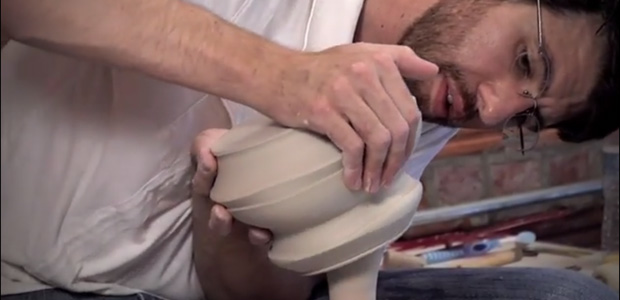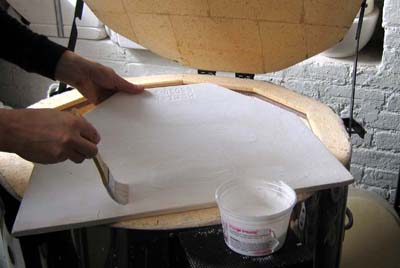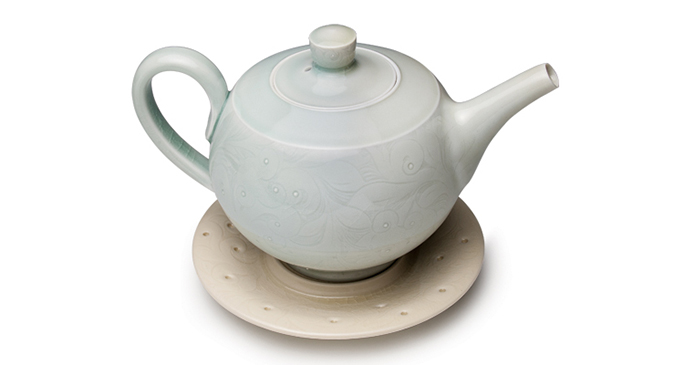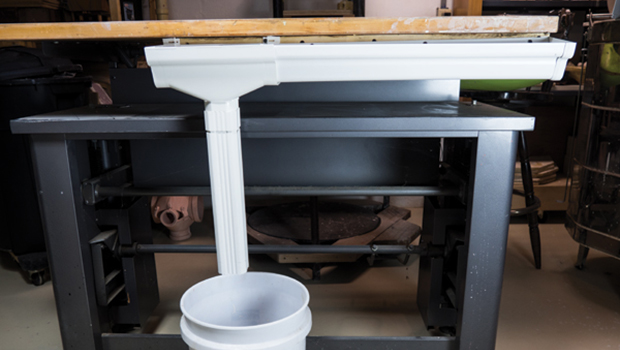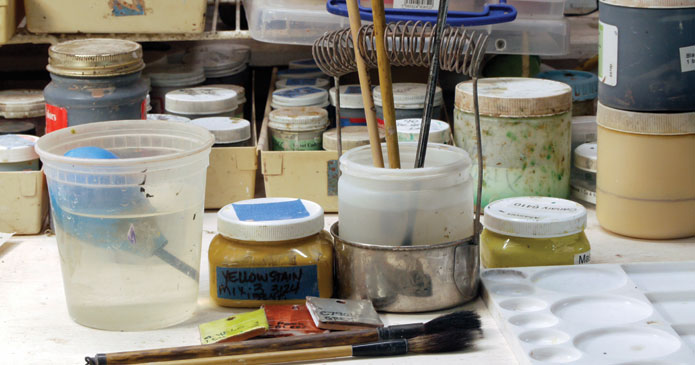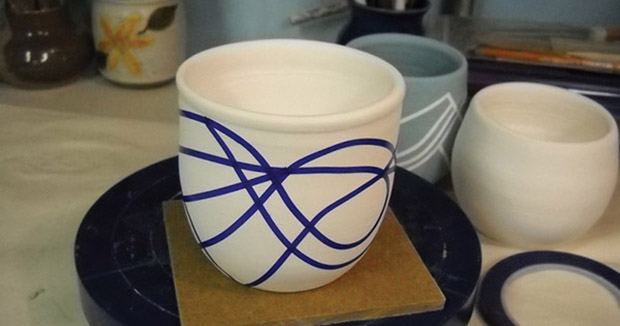

There is nothing more frustrating than having glaze or underglaze go where you don’t want it while decorating a pot. Janie Varley was searching for ways to create super-crisp lines on her pottery that would prevent glaze seepage and stumbled upon auto tape resists. Because the tape is so thin, Janie can create gestural lines without creasing the tape.
In this post, an excerpt from our book, 100 Tips, Tools, & Techniques, Janie shares her ingenious auto tape resist method for decorating pots. Enjoy!
Get Ultra-Fine Lines with Auto Tape Resists
Getting a super fine line when glazing your pots is often difficult—and even more so when you’ve had a few cups of coffee before heading into the studio. Try using this tape resist technique to glide over curves and around handles when decorating your next great set of coffee cups.


Auto trim tape is a flexible adhesive used in auto body detailing. You can generally buy it anywhere auto paint is sold. It comes in 1⁄8-inch, 1/4-inch, 1/2-inch, and 3/4-inch widths.
Be sure to wipe your pieces with a damp cloth and allow them to dry before applying the tape; it doesn’t stick well to dusty bisque.
To apply, set the tape end where you want to start, and then pull to stretch the tape as you press it to the surface. Press firmly. I run my thumb over it to be sure the edges are tightly adhered to the bisque. It is very easy to apply the tape in curves, just remember to continue to stretch and stick the tape as you go. I cut the end, rather than tear or break it off, to insure that it will lie flat, especially if my line will start or end independently of other lines.
The pot is immediately ready to dip, brush, or spray with your choice of decoration—from glaze and slip to underglaze and terra sigillata. When the coating is dry, use a needle tool or an X-Acto knife to lift the tape and pull it away from the surface.


You can also use the tape on greenware; you just have to take extra care when pulling, stretching, and pressing. This resist technique is great for layering glazes or slips too, as long as you fire each layer before adding another round of tape.


